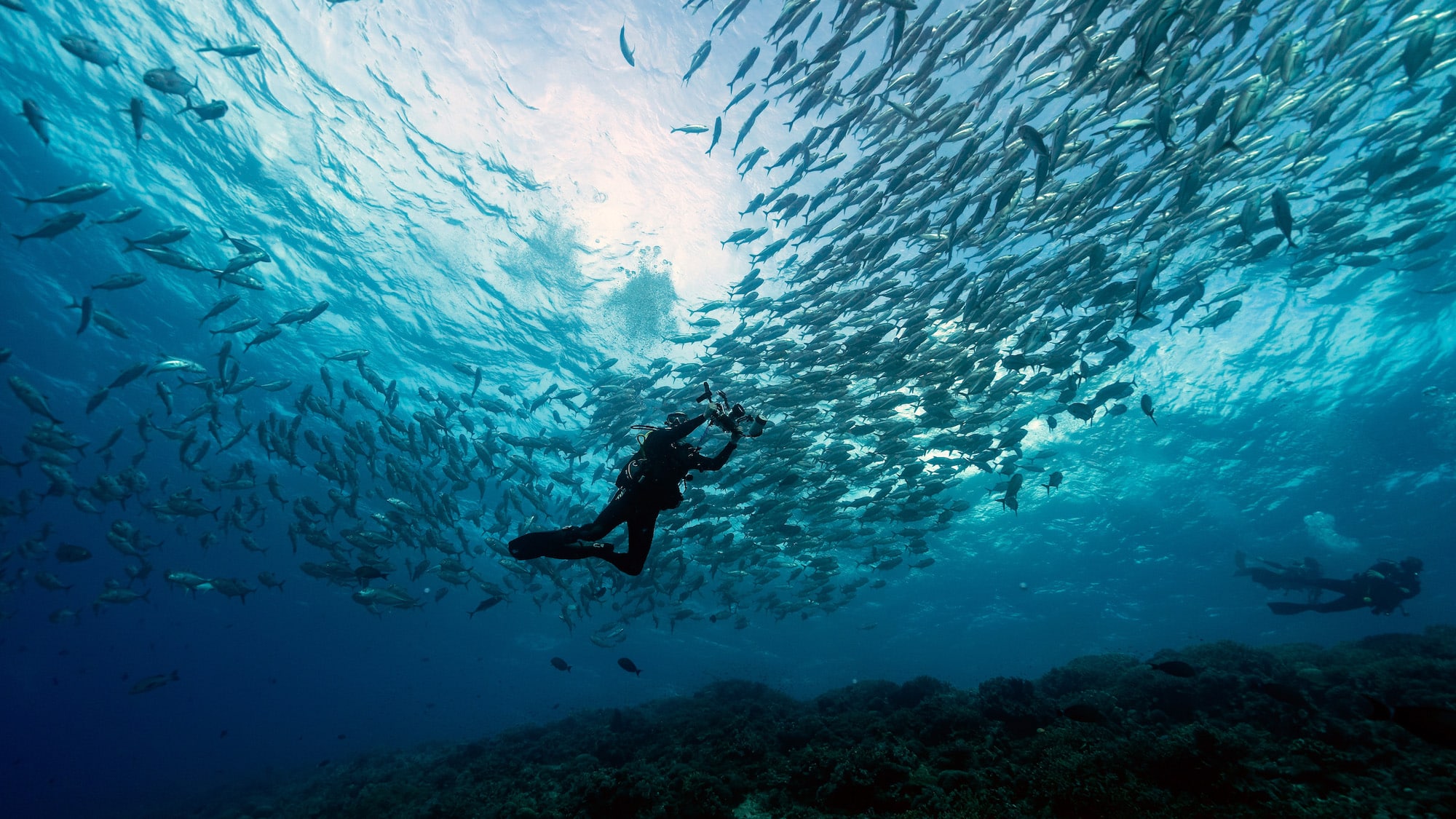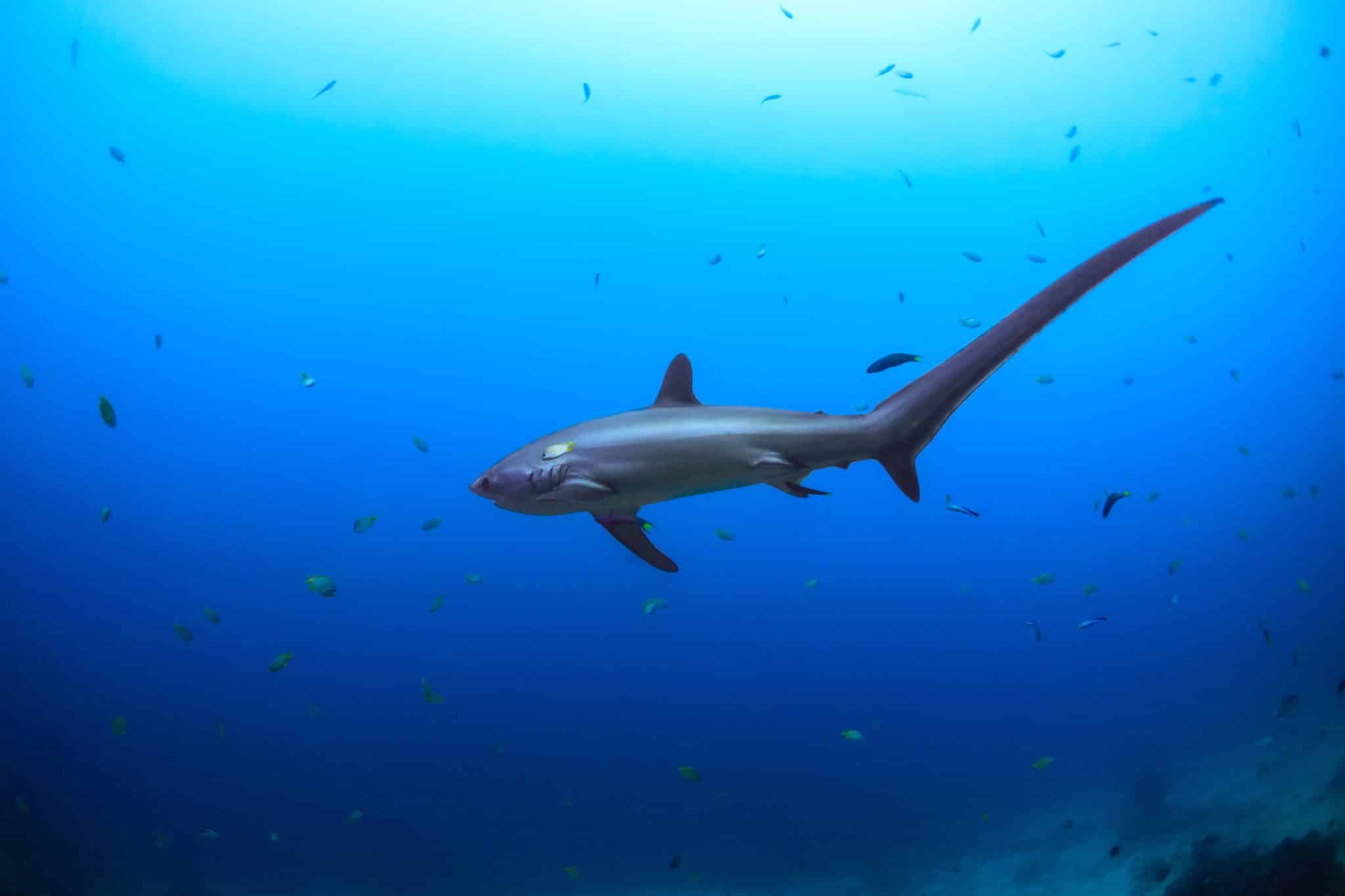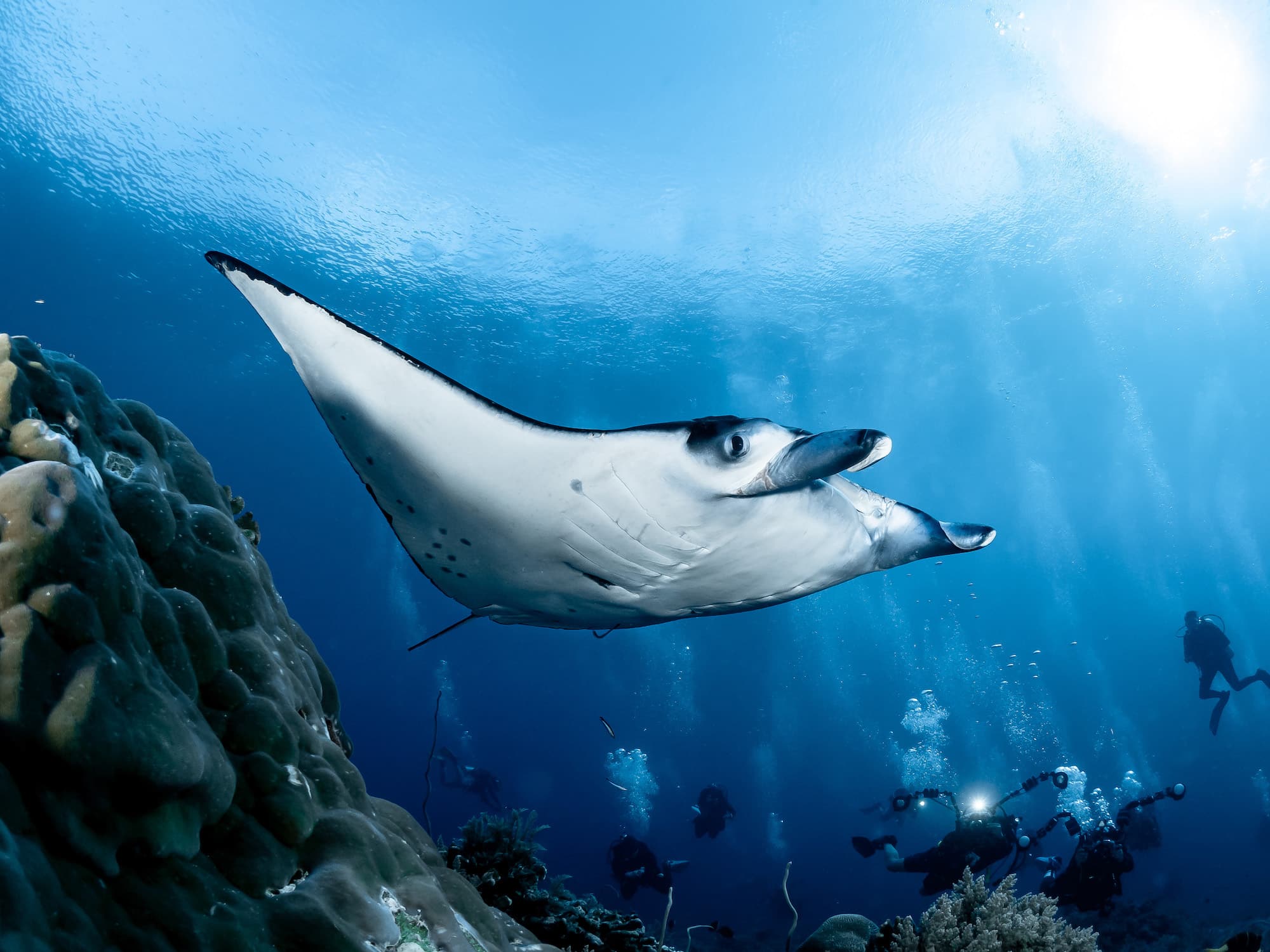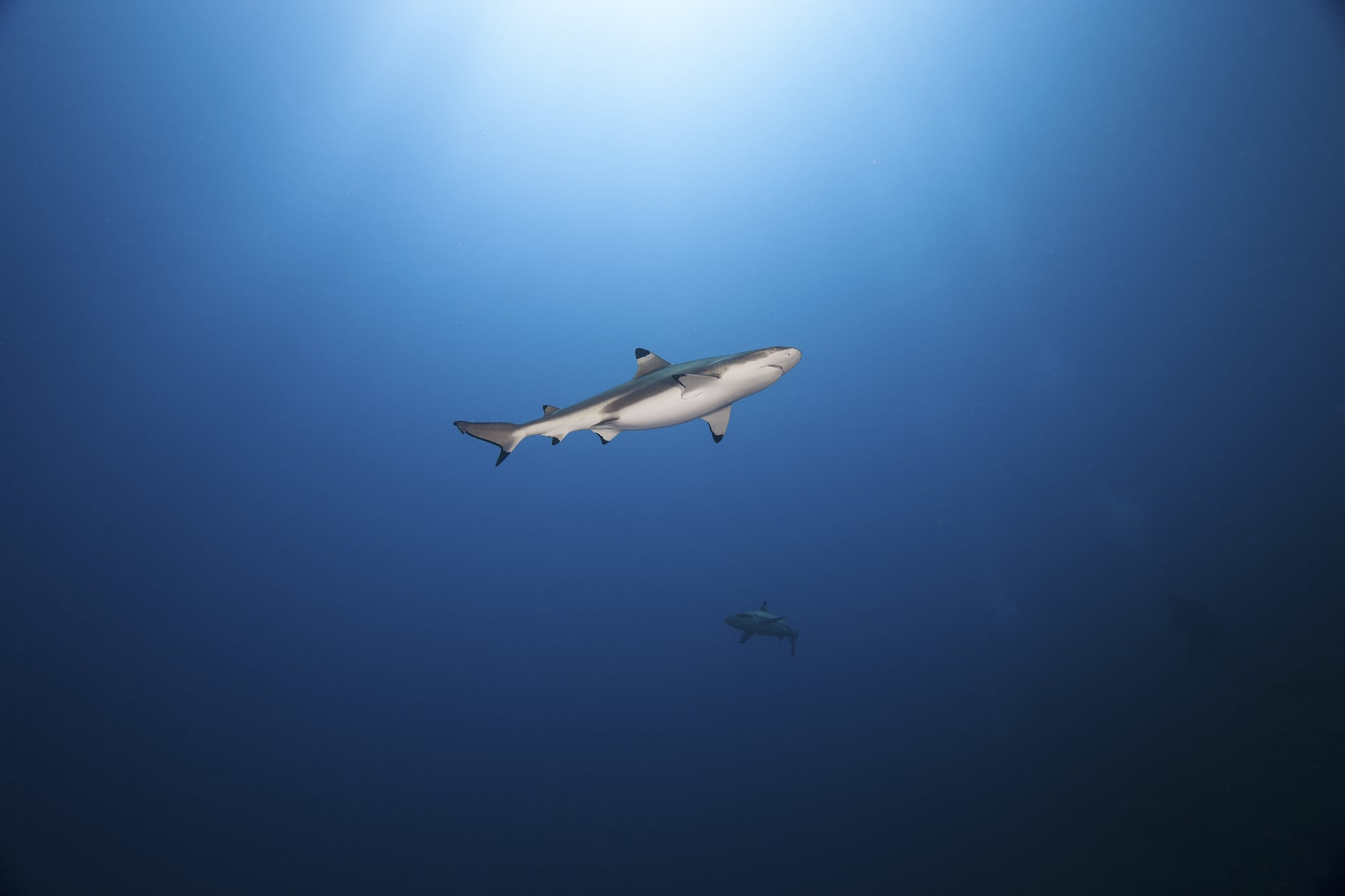News
Five best places to find Big Fish in the Philippines
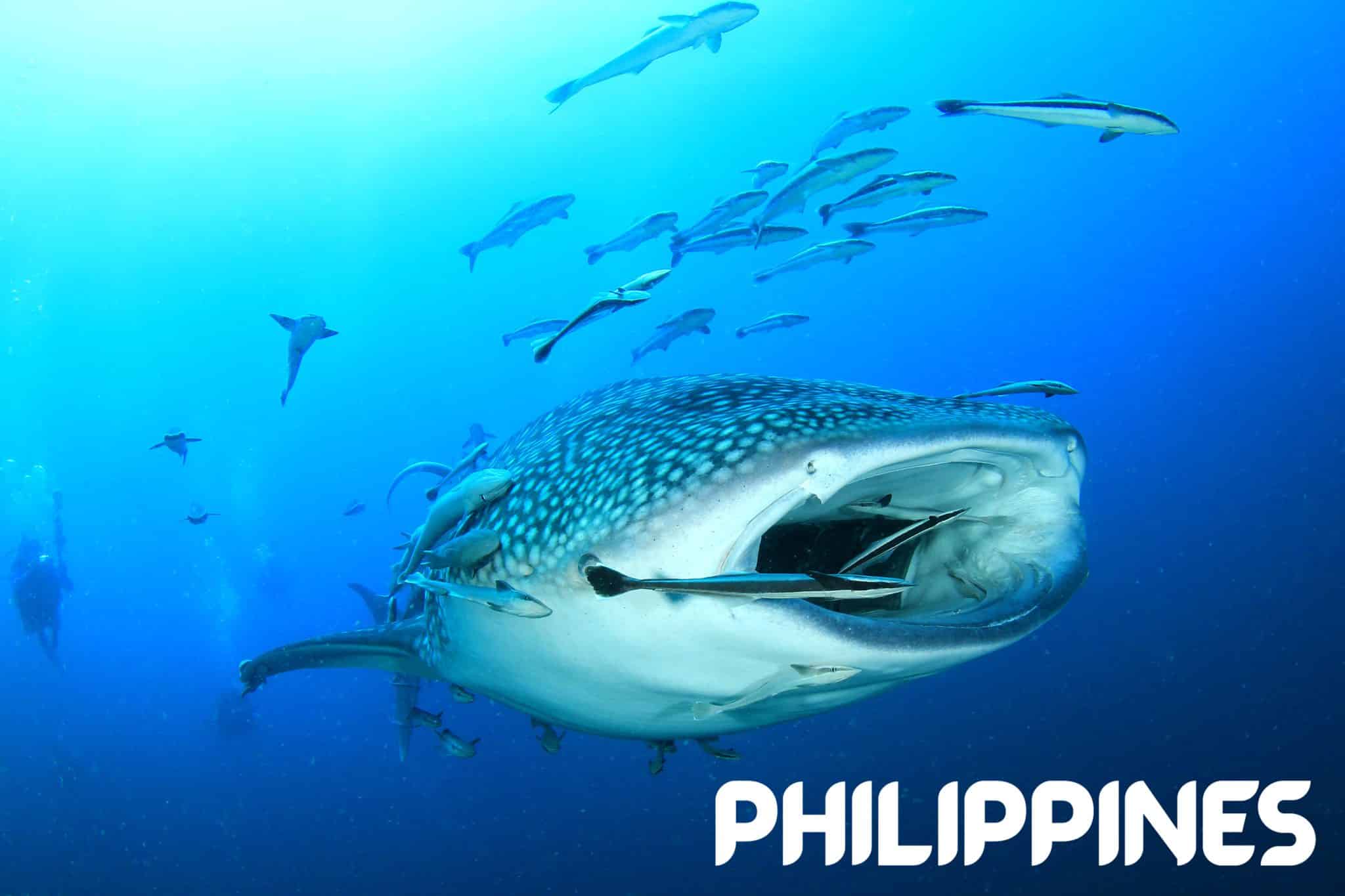
Guest Blog by Phil North
Divemaster Phil North, from Dive Worldwide shares his five best spots to find Big Fish in the Philippines.
If diving with the ocean’s giants is on your bucket list, the Philippines is the perfect destination. Whale sharks, striped barracudas, turtles, hammerheads, manta rays, dugongs, and even 2-metre-long Napoleon wrasse can be found here.
The Philippines is in the Coral Triangle – the most biodiverse coral reef on the planet – so its waters are bursting with marine life, including large pelagics, sponges, and over 2,500 species of fish.
So where should you visit to see the biggest and most exciting species? There are over 7,000 islands in the archipelago and several world-class diving sites to choose from, so read Dive Worldwide’s guide to discover the best diving spots for big fish encounters in the Philippines.
Outstanding marine biodiversity and reef sharks
If you’re after an abundance of big fish, the UNESCO World Heritage Site of Tubbataha will not disappoint.
The dive season runs from March to June, with a chance to see a spectacular range of species, including tiger shark, hammerhead, leopard shark, grey reef shark, nurse shark, manta, marble and eagle ray, whale shark, barracuda, tuna, hawksbill and green turtle, and dolphins.
Tubbataha is the largest marine protected area in the Philippines and offers superb diving opportunities. It is located 150 kilometres from Palawan in the Sulu Sea, so you will need a liveaboard to access these world-class dive sites.
Recommended dive trip:
Tubbataha Liveaboard
When to go: April – June
Shark Encounters – rare thresher sharks
Shark enthusiasts will love this world-famous diving location.
Monad Shoal, also known as Shark Point, is the only place in the world where rare thresher sharks can be seen daily.
This iconic, but usually shy, species gets its name from the distinctive tail which it uses like a whip when hunting. Here, you can encounter thresher sharks as they are swimming around the cleaning stations in the shallow reefs. You may also find white-tip, black-tip, bamboo, and nurse sharks in these waters.
With beautiful coral gardens and white sands to rival Boracay, Malapascua is a popular destination for divers and holiday-makers alike.
Recommended dive trips:
Big Fish Tour
When to go: November – April (but possible all year)
Visayas Liveaboard
When to go: April – June
Sharks & Reefs
When to go: All year round
World’s largest rays and fish
Bicol – Donsol and Ticao Island
These popular diving destinations are frequent haunts of the world’s biggest ray and fish species – the oceanic manta ray and the whale shark.
The Manta Bowl dive site, in Ticao Pass, is famous for its manta ray population and for being one of the best diving sites in the Philippines.
Whale sharks migrate to Donsol between late November and May, which is the best time to enjoy close encounters. Although whale sharks can exceed 15 metres long, they are gentle giants that filter-feed on plankton, krill, and small plants.
Recommended trips:
Big Fish Tour
When to go: November – April (but possible all year)
Reef sharks, hammerheads and schools of pelagic fish
Apo Reef is one of the most celebrated dive sites in the Philippines and an excellent place to find sharks or other big pelagics. Hammerheads are one of the top attractions in these waters, but black and whitetip sharks, and even occasionally thresher sharks visit here. You can also expect to encounter other large species like groupers, tuna, eagle and manta rays, large trevally, turtles and, if you are lucky, dolphins.
Recommended trips:
Club Paradise Resort – offering daily dive trips to Apo Reef
When to go: anytime
Liveaboards
When to go: April – December
Barracuda, turtles and dugong
North of Palawan – Coron
We know, not all these species are technically fish, but they are impressively large pelagics.
Dugong, also known as sea cows, were even thought to have inspired sailor’s stories about mermaids! This near-mythical marine mammal is listed as a vulnerable species on the IUCN Red List, but you may be lucky enough to spot one on an eco-tourism dive in Coron.
At Barracuda Lake, you can look out for the legendary giant barracuda (though even the regular ones can be over a metre long). This is also a great location for viewing green and hawksbill turtles.
Recommended trips:
Dive Coron Bay on Sangat Island (also excellent for wreck diving)
When to go: October – June
Liveaboards
When to go: April – December
Top choice for big fish encounters:
Big Fish Tour
This underwater safari visits some of the best sites for whale shark, thresher shark, and manta ray encounters. The two-week tour includes up to 14 diverse and exciting dives, with stays at relaxing tropical beachfront resorts.
Find out more
 Get in touch with the friendly Dive Worldwide team for first-hand advice on your next diving holiday to the Philippines. They offer a superb range of resort and liveaboard options. Visit the website, send an enquiry, or call the expert team on 01962 302087.
Get in touch with the friendly Dive Worldwide team for first-hand advice on your next diving holiday to the Philippines. They offer a superb range of resort and liveaboard options. Visit the website, send an enquiry, or call the expert team on 01962 302087.
News
Book Review: Fire on Monroe Bravo by Fred Lockwood

Fire on Monroe Bravo is the latest book in the Jack Collier series by Fred Lockwood. Our story begins with our lead characters, Jack and Sandro, owners of Marine Salvage & Investigation Company, arriving on the Monroe Bravo Oil & Gas Platform in the North Sea. Having secured a contract for their vessel the MV Stavanger to act as support ship to the platform for TransGlobal Oil, our protagonists are on a celebratory visit.
However almost as soon as they arrive a series of explosions rock the platform, causing huge damage, loss of life and the very real danger of a massive human, ecological and financial disaster.

As the danger mounts for both our heroes and the surviving workers, Jack and Sandro will have to escape the inferno, all while trying to save the platform and the men still trapped unable to help themselves.
The disaster sets the scene for the unfolding story lines following the fate of the platform and our main characters, the police investigation into a suspected terrorist act and the actions of TransGlobal Oil as they attempt to navigate the pubic outcry and financial repercussions.
In his eighth book, Fire on Monroe Bravo, Fred Lockwood delivers an explosive thriller, with plenty of above and in-water drama, and our heroes fighting for survival, what more can you ask for?
We thoroughly recommend this read and look forward to the next in the series. For more information about his book series, you can check out the reviews of his previous books here on Scubaverse.
- Title: Fire On Monroe Bravo
- Author: Fred Lockwood
- ISBN: 979-8325324536
Available in a paperback version and for Kindle from Amazon and book stores.
Blogs
Alonissos: The complete diving destination (Part 1)

In June we were incredibly fortunate to be invited to dive in Alonissos, a small Greek Island in the Sporades island chain located in the North Aegean Sea. While I have long been a big fan of the Greek Islands as a great holiday destination, I had not had the opportunity to do any diving on previous visits and Mike and I were extremely excited to see what Alonissos had to offer both above and below the surface!

The Sporades are easily accessible via the airport in Skiathos (the first island in the chain), which is served by Jet2 flights from all major UK airports from May through October. Numerous ferries and charter boats make island hopping from Skiathos Town a breeze. After an hour boat ride, the picturesque port of Patitiri was a wonderful introduction to Alonissos, where we were met by our gracious hosts Kostas of Albedo Travel and Dias of Alonissos Triton Dive Center. Mike and I were delighted to be staying at the Paradise Hotel, aptly named for its stunning views over the sea and great location for walking to the waterfront.

Alonissos is beautifully situated in the National Marine Park of Alonissos and the Northern Sporades, the largest marine protected area in Europe. The surrounding seas offer fabulous marine life, including incredibly rare species such as the Mediterranean monk seal. They boast deep walls covered in gorgonians and sponges, stunning topography with caverns, swimthroughs and pinnacles, and the first accessible ancient shipwreck from 500BC!

In locations where historical sites have been reported, the waters are largely restricted, but with collaboration between government, underwater archeologists and dive centres, incredible underwater museums are being created for a truly unique diving experience. Alonissos is home to the first of these, the Ancient Shipwreck of Peristera Accessible Underwater Archeological Site. The chance to dive into history (along with reports of healthy reef life and amazing underwater topography) meant Mike and I were keen to get in the water.

Our introduction to the diving around Alonissos was at the Agios Georgios Pinnacles, in the channel between Alonissos and Skopelos. This fantastic site was named “The Chimney,’ and proved to have a huge amount to see. We got to a decent depth here (over 25m), and marvelled at a colourful reef wall with a wonderful swim through whose rocky walls were absolutely covered with life. As well as brilliant topography there was no shortage of macro life here. We saw numerous nudibranchs, five different species in total. The second dive at Mourtias reef nearby was a shallower dive along a nice wall with lots of crevices. Several moray eels and grouper called this site home. We enjoyed looking in the crevices for lobster and smaller benthic life, such as cup corals and tunicates.

Our itinerary allowed us two dives a day with afternoons left to explore the island with our hire car and evenings to enjoy the famous Greek hospitality. This proved to be a lovely mix of in-water and land based diversions.

The next days diving to the Gorgonian Gardens and Triton’s Cave was to be even better! These two stunning sites are nothing short of fabulous. The Gorgonian Gardens was a deep wall near to the Agios Georgios islands. The ever-present currents in this deep channel meant that the sea life was amazing … the namesake Gorgonian sea fans dotted the wall at a depth of 30 to 50 meters, getting ever larger the deeper we went. Above 30m was by no means less beautiful, with sponges, corals, scorpionfish, moray eels and some rare and colourful nudibranchs.

The second shallower dive of the day was to Triton’s Cave or the Cavern of Skopelos, on the east side of that island. The spectacular rock formations had wild striations both above and below the water making a truly epic topography. The cavern entrance was at 14m, and big enough for a buddy pair, winding up to 6m and passing two beautiful windows out into the blue. Emerging from the cavern, the light at the shallower depths and the incredible rock formations made for a fantastic gentle swimming safety stop and we all surfaced by the boat with massive grins.

Check out our next blog :Alonissos: The complete diving destination (Part 2)” to hear about our amazing dive on the 2500 year old Peristera Wreck!
Thanks to:
Alonissos Triton Dive Center https://bestdivingingreece.com/
Albedo Travel https://alonissosholidays.com/activities/
Paradise Hotel https://paradise-hotel.gr/
Alonissos Municipality https://alonissos.gr/en/
-

 Blogs2 months ago
Blogs2 months agoDiving With… Nico, Ocean Earth Travels, Indonesia
-

 News1 month ago
News1 month agoMurex Bangka Announce New Oceanfront Cottages & Beachfront Dining
-

 Blogs2 months ago
Blogs2 months agoA new idea in freediving from RAID
-

 Marine Life & Conservation1 month ago
Marine Life & Conservation1 month agoIceland issue millionaire whale hunter a licence to murder 128 vulnerable fin whales
-

 Marine Life & Conservation2 months ago
Marine Life & Conservation2 months agoThe Shark Trust Great Shark Snapshot is back
-

 News3 months ago
News3 months agoCharting New Waters; NovoScuba Goes Global with the Launch of their Revolutionary Dive Training Agency!
-

 Gear News1 month ago
Gear News1 month agoNew Suunto Ocean – a dive computer and GPS sports watch in one for adventures below and above the surface
-

 Marine Life & Conservation Blogs2 months ago
Marine Life & Conservation Blogs2 months agoBook Review: Plankton


